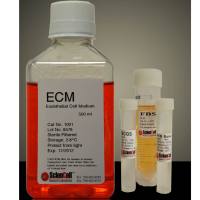Genetic Manipulation of Corneal Endothelial Cells: Transfection and Viral Transduction
The corneal endothelium plays a key role in the physiology of the cornea, maintaining its transparency by regulating corneal hydration. Moreover, corneal endothelial cells play the central role in irreversible corneal graft rejection as human corneal endothelial cells are predominantly postmitotic, and destroyed cells cannot be replaced. Therefore, gene transfer to the corneal endothelium to modify the corneal immune response for prophylaxis of corneal endothelial rejection has become a fast-developing research field. An addition pivotal advantage of gene transfer to the cornea is the possibility of ex vivo transfection during organ culturing, minimizing the risk of systemic spread of the vector or the transgene expression. A wide variety of vectors has been found suitable for gene transfer to the corneal endothelium, and therapeutic efficacy has been demonstrated in some experimental models of corneal disease. However, the transfection efficiency varies widely among the different vectors, and the optimal transfection efficiency to provoke a desired effect is still unclear. Moreover, it certainly depends on the biological function of the chosen transgene (cytokine, growth factor, etc.). As a consequence, relatively few studies have been able to demonstrate significant prolongation of corneal allograft survival after gene transfer to the endothelium, and the ideal transfer strategy has not been found. In contrast, different transfer strategies compete today, each with its special advantages and disadvantages. Physical, viral, and nonviral techniques have been used to transfer transgenes into endothelial cells. In the introduction of this chapter, a short overview of the different gene transfer strategies for endothelial cells is given; the materials and methods sections describe in detail the most widely used viral gene transfer technique (adenoviral) and an important nonviral alternative technique (liposomal transfection) to endothelial cells.
![预览]()






